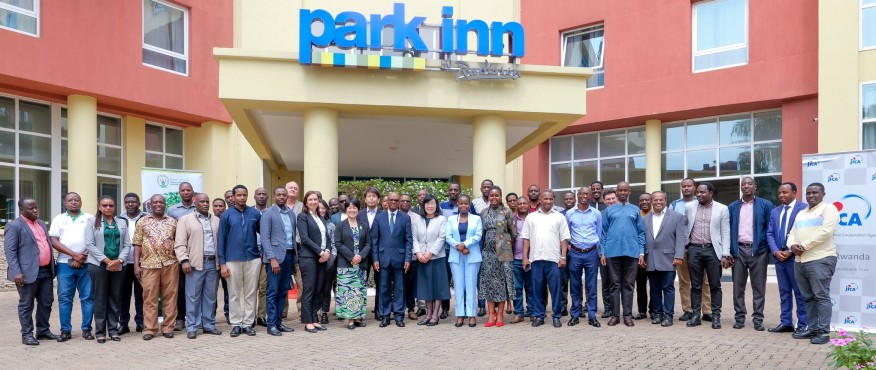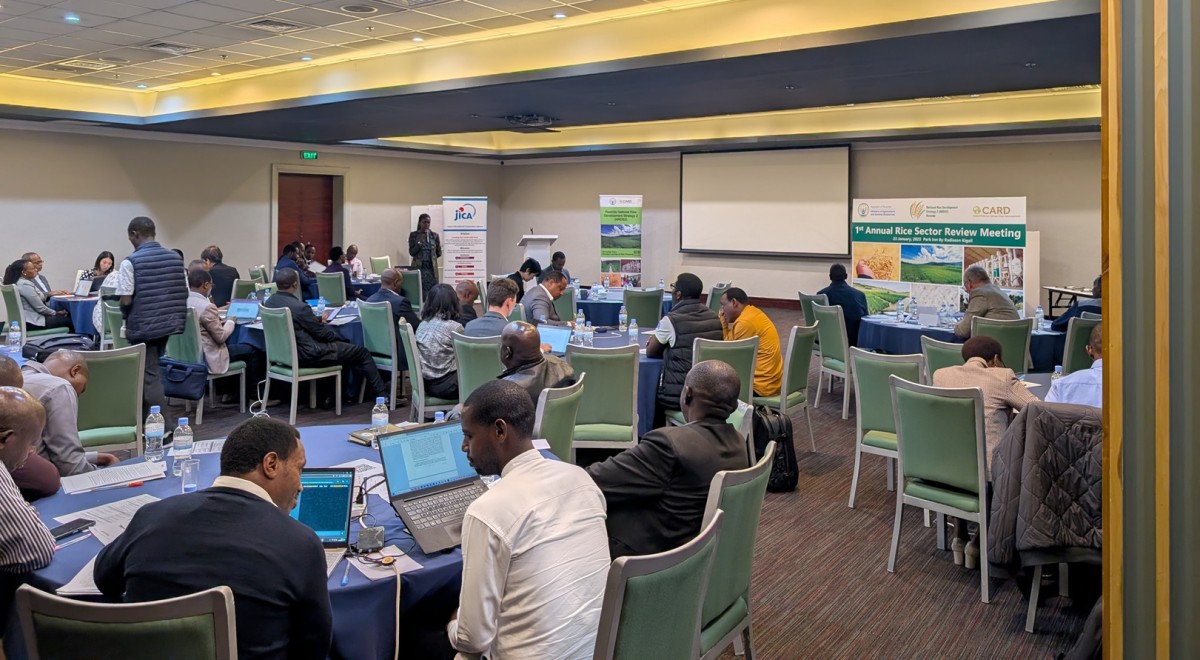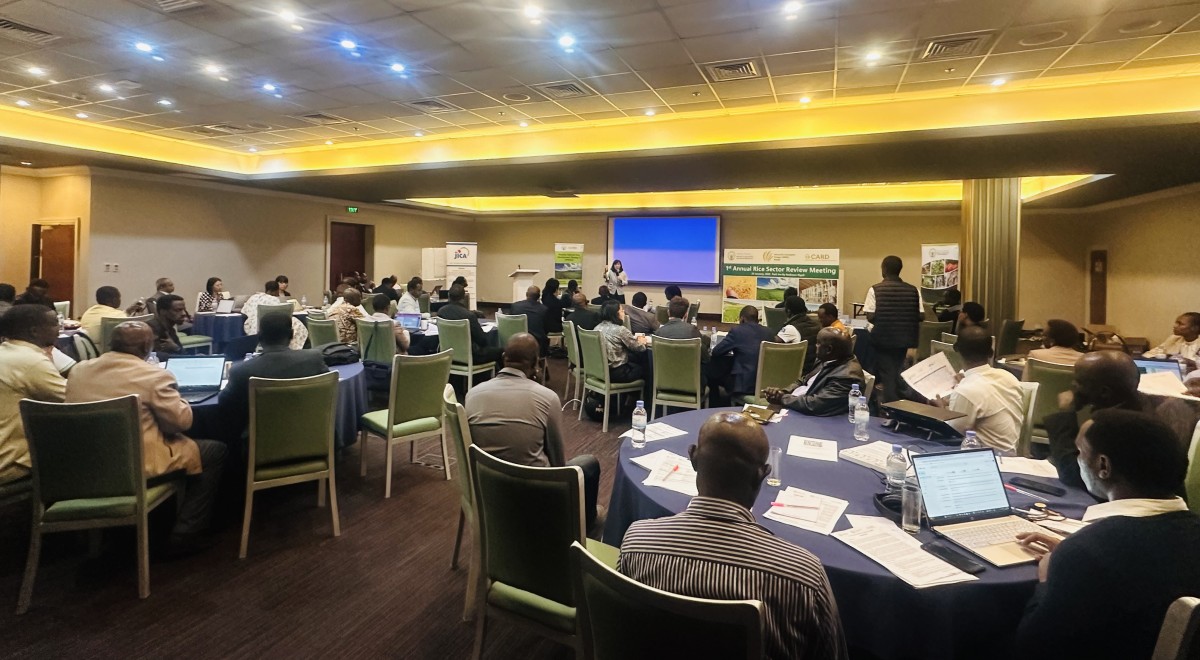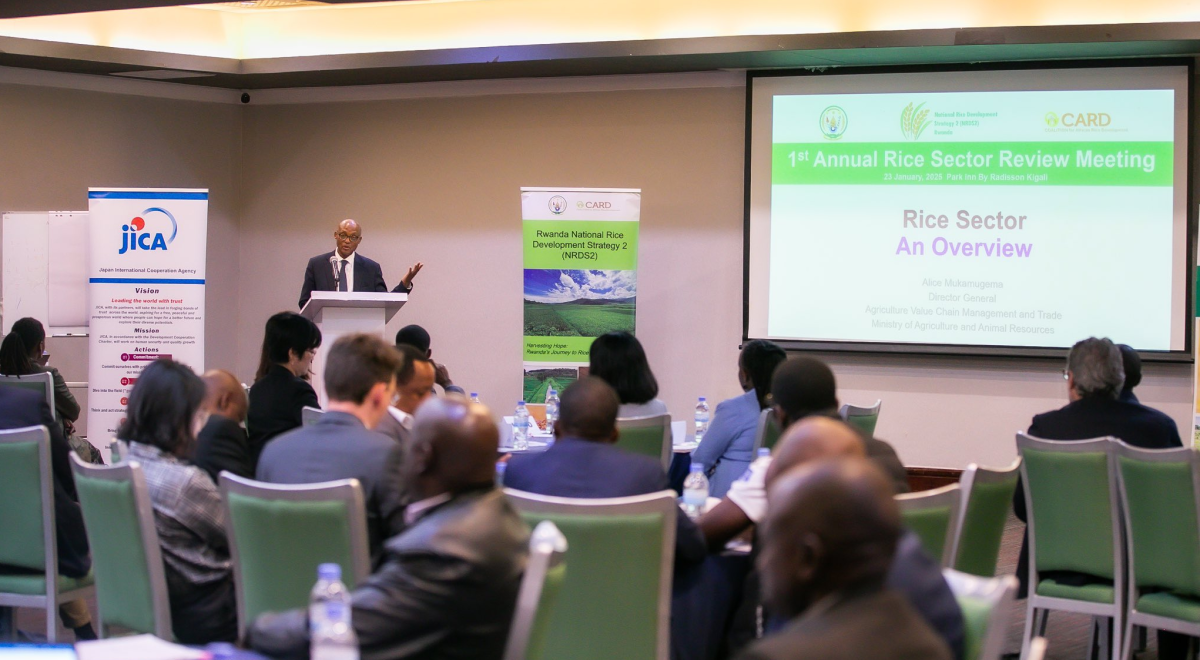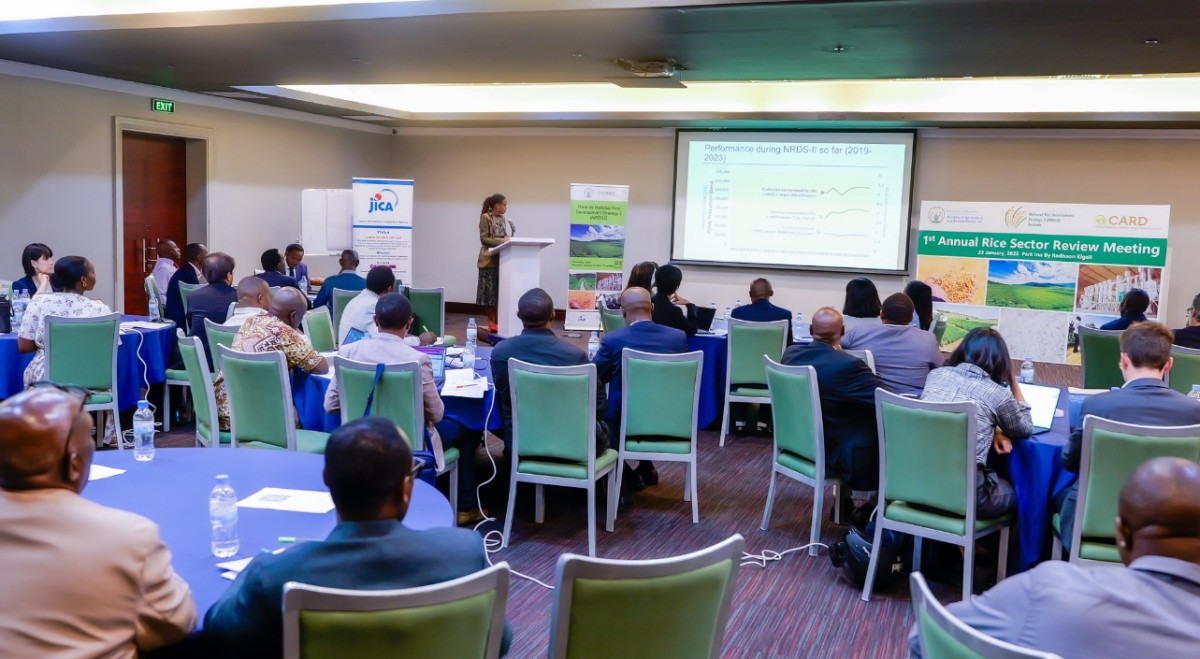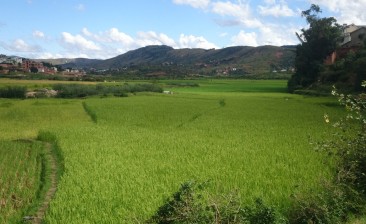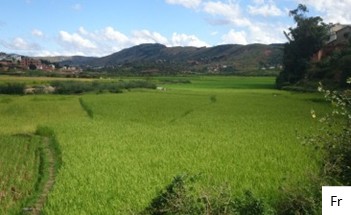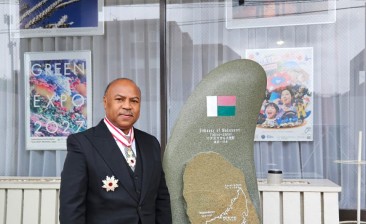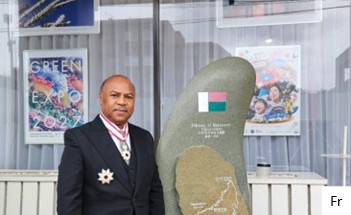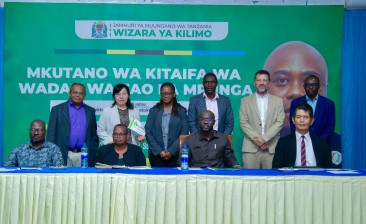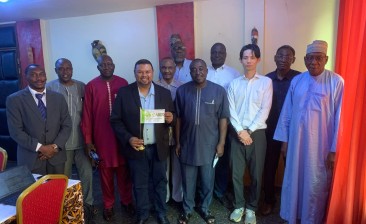Rwanda, January 2025
Annual Rice Sector Review Meeting (ARSRM) in Rwanda
Rwanda’s second National Rice Development Strategy (NRDS-2; 2021-2030) aims to triple domestic rice production to 390,000 tons, which would meet about 90% of the estimated country’s demand for consumption by 2030. Through a R.I.C.E approach, Rwanda’s NRDS-2 outlines activities that could enhance area under cultivation, increase total factor productivity, improve marketing of local rice, and enable policy environment for increasing private sector investments in rice sector. To assess progress made in implementing the NRDS-2; CARD has established a framework for monitoring & evaluation (M&E) in consultation with NRDS taskforce members and JICA Advisor for Rwanda’s Ministry of Agriculture and Animal Resources (MINAGRI).
Under this framework, the NRDS taskforce members have set a total of 20 M&E indicators – 4 overall indicators, 3 Resilience (R) indicators, 4 Industrialization (I) indicators, 6 Competitiveness (C) indicators, 2 Empowerment (E) indicators, and 1 under market price (P). Methodology for collecting data and secondary data sources for each of these indicators were agreed upon by the NRDS taskforce members at a workshop held at Nyamata in September 2024. Data collected by the NRDS taskforce members was verified and any required changes were made to the description of the agreed indicators as per the availability of data. After the validation of the collected data, the NRDS taskforce members organized Rwanda’s first Annual Rice Sector Review Meeting (ARSRM) in Kigali. This report summarizes the outputs from the ARSRM activity, and the way forward agreed by the NRDS taskforce members after the ARSRM in Rwanda.
Annual Rice Sector Review Meeting (ARSRM)
The NRDS taskforce members, with support from JICA-Rwanda office, organized the ARSRM at Park Inn Hotel in Kigali on 23rd January. The meeting was attended by about 64 participants representing farmer cooperatives, private millers, government officials, development partners, youth organization, local government bodies and press media.
The event was officially opened and presided over by Hon. Minister for MINAGRI Dr. Mark Cyubahiro Bagabe. The Minister informed the participants that rice production is the second most dominant farming activity, after banana in Rwanda. Government of Rwanda is committed to implement the NRDS-2, because it is well aligned to Strategic Plan for Transformation of Agriculture (PSTA-5) and National Strategy for Transformation (NST-2). He urged the development partners and other stakeholders to ensure that solutions to the various challenges in developing the sector are effectively discussed.
NRDS Focal point and Director General for Value Chain Management and Trade at MINAGRI, Ms. Alice Mukamugema presented the goals and objectives of the NRDS-2 and the current trends in rice production and trade in Rwanda. Using overall indicators, price indicator and one sample from each of the R.I.C.E indicators, Ms. Mukamugema elaborated the progress made against the targets set under the M&E framework. She further emphasized that the major challenges to achieving this target however include a) expansion of area under rice cultivation through sustainable increments in on-farm productivity from 4.3 t/Ha to 6.5 t/Ha, and b) significant improvement in quality of the locally produced rice to effectively substitute the imported rice in national markets.
NRDS taskforce member and Senior Scientist in Rice at Rwanda Agriculture Board (RAB) presented the current status of rice research and extension in Rwanda. By highlighting the recent advancements in varietal development, soil profiling, crop nutrient analyses, and socioeconomic studies, he emphasized the need for mobilizing more financial and human resources for carrying out aggressive research and international collaborations.
NRDS taskforce member and Crop Products Supply Chain and Market Analyst at MINAGRI, Mr. Egide Mutabazi, presented a summary of 6 project concept notes developed by the taskforce members to the stakeholders. By outlining the overall and specific objectives, components and estimated budget of the concept notes, he explained that the proposed activities will help achieve the goals and objectives of the NRDS-2. He thus appealed to the stakeholders to consider funding the activities under the proposed concept notes.
Representatives from the participating development partner organizations such as Japan International Cooperation Agency (JICA), World Bank, World Food Programme (WFP), United States Agency for International Development (USAID), Korea International Cooperation Agency (KOICA), Kilimo Trust, CARD and International Food Policy Research Institute (IFPRI) expressed solidarity to the efforts in implementing the NRDS-2 in Rwanda. Hon. Minister thanked the development partners for their continued support and requested the NRDS taskforce members to revise the targets so that they are achievable in view of the limitations in natural-, human- and financial resources.
Way forward
Based on the interactions with the stakeholders, the taskforce members identified several actions that need to be undertaken to speed up the implementation of the NRDS-2. These include (i) lobbying for new project formulations with those development partners who have evinced interest in involving in rice-related activities, (ii) revising the targets for NRDS-2, (iii) setting up a new platform for the stakeholders in the country, and (iv) developing a new concept note for interventions in seed sub sector.
Related article on the New Times Rwanda: How Rwanda has increased rice production and its commercialization
